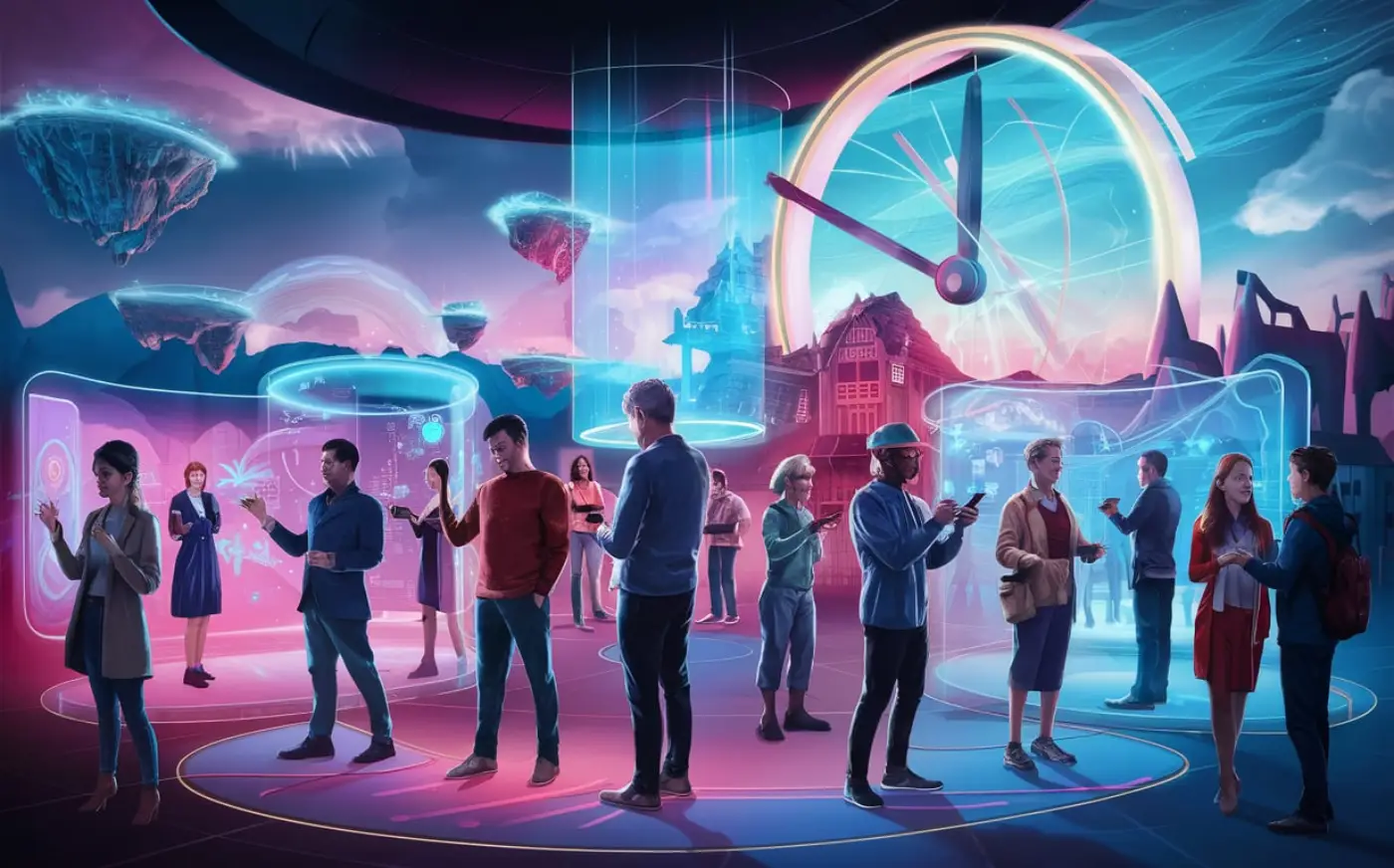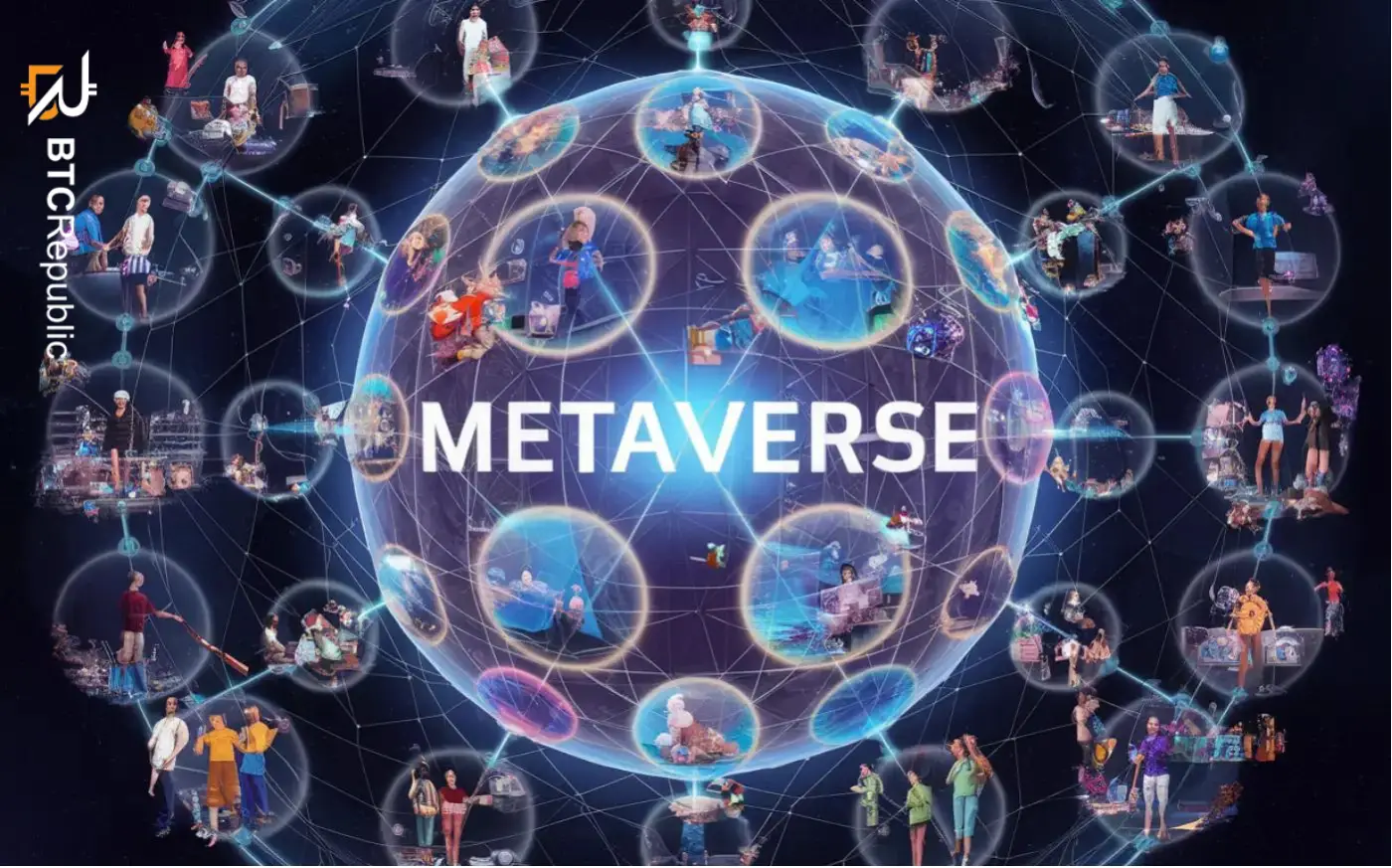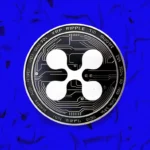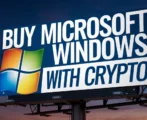Billionaire Mark Zuckerberg rebranded his company, formerly known as Facebook, into Meta. This name change spearheaded increased interest in the metaverse, a field initially limited to the cryptocurrency industry.
However, very few people understand the metaverse and what it entails. The metaverse remains a nascent space, and companies are constantly exploring this space to identify new opportunities.
One industry that has made great strides in this area is the cryptocurrency and blockchain.
This guide will deeply dive into the metaverse to understand what it is and how it works. We will also explore the importance of the metaverse in the crypto industry.
What is the Metaverse?
The metaverse is a term that originated from science fiction. The word combines “meta” with “universe” to describe a shared virtual world where people can buy land, property, avatars, play games, and even run virtual businesses.
The metaverse was previously called “the 3D internet” or “the internet of experience.” It allows internet users to have the same experiences as in real life. For instance, you can socialize in this digital world the same way you would at a real-life party.
You cannot talk about what the metaverse is without mentioning blockchain technology. While blockchain improves metaverse experiences, not all metaverses run on the blockchain.
A metaverse integrating blockchain technology enables a digital economy where people can own currencies, utility tokens, and non-fungible tokens (NFTs) that users can own, trade, or exchange.
The Evolution of the Metaverse

Interest in the metaverse grew with the COVID-19 pandemic. As people remained at home and had to turn to the Internet for school and work, interest in technologies that enabled a similar kind of interaction as in the real world increased.
In July 2021, Meta CEO Mark Zuckerberg announced that his company would change its name to show commitment to creating a virtual environment that appeals to all.
Over the years, Zuckerberg has championed the creation of multiple tools, including the Quest VR headset. According to the billionaire, this headset will merge virtual reality (VR) with the metaverse for improved capabilities.
Besides Meta, other technology giants such as Google, Microsoft, Samsung, and Sony are also exploring the potential of the metaverse.
In 2022, JPMorgan, the largest bank in the United States, became the first bank in the metaverse after opening a “lounge” in Decentraland.
At the time, JPMorgan also predicted that this alternative universe had the potential to generate $1 trillion in yearly revenues.
“The metaverse will likely infiltrate every sector in some way in the coming years, with the market opportunity estimated at over $1 trillion in yearly revenues,” the bank said.
Given such estimates, it is easy to see why this technology still attracts much interest and is poised for growth. Tech giants, financial institutions, and games like Roblox and Fortnite might be the beginning of the projects that will launch on the metaverse.
How Does The Metaverse Work?
The metaverse is classified into two parts: the first entails cryptocurrencies and blockchain technology, while the second involves virtual worlds.
When discussing alternative worlds that integrate NFTs and cryptocurrencies, we should look at Decentraland and The Sandbox.
The Decentraland metaverse supports a virtual world where people can interact like they would in real life. In this metaverse, one can buy pieces of virtual land in the form of NFTs.
Users on Decentraland can set up marketplaces and create unique environments and applications. You can create anything on Decentraland by owning a piece of land or real estate.
Since blockchain technology powers the Decentraland, you need cryptocurrencies to settle transactions. The native token for Decentraland is MANA, used to make payments in this virtual world.
The other popular blockchain-based digital world is The Sandbox. The Sandbox is a video game based on the Ethereum blockchain. It allows people to own a piece of land as an NFT.
Those who own pieces of land on The Sandbox can develop custom games and locations before monetizing them. While The Sandbox is similar to Decentraland, the former is more focused on gaming, while the latter focuses on owning pieces of virtual land.
Like Decentraland, The Sandbox is also powered by its native token known as SAND. Decentraland and The Sandbox users can generate income by trading land or in-game items.
The other type describes a virtual world that does not rely on blockchain technology. This is the type of metaverse that tech companies like Facebook focus on.
A metaverse that lacks blockchain features does not comprise NFTs or cryptocurrencies. Instead, these platforms focus on setting up virtual places where people can meet for business or to socialize.
Applications Of The Metaverse

The metaverse has many applications in the cryptocurrency and blockchain space, including the following:
Gaming and Entertainment
One of the most popular applications is in gaming and entertainment.
Two of the most popular games that have integrated metaverse features are Roblox and Fortnite. Roblox is a Sandbox-like virtual world that allows people to create and participate in games and other experiences.
The CEO of Roblox Corporation, David Baszucki, has previously referred to Roblox as the “shepherds of the metaverse.”
Fortnite is also another popular game on the metaverse. It offers a virtual platform where people can attend live events and interact.
While it does not integrate blockchain technology, Fortnite sheds light on the possibilities of the virtual worlds in gaming.
The Sandbox is a blockchain-based game on the metaverse. It features an open-world video game on PC, Mac, and mobile devices, where players can explore a map with unique experiences.
Virtual Real Estate and Property
The other major use case is in virtual real estate. This use case is highlighted in Decentraland.
Decentraland is a virtual reality platform powered by the Ethereum network. Decentraland allows users to buy parcels of land and virtual properties (real estate) built on top of that land.
If you own LAND on Decentraland, you will have control over what is built on that virtual land. Besides allowing people to buy and own land and property, Decentraland offers a peer-to-peer network where users can interact.
Virtual Events
People can also host virtual events on the metaverse, a use case that Decentraland has adequately highlighted.
For instance, the Fashion Week hosted on Decentraland allows fashion houses to showcase their collections to a virtual audience. This event features runway shows, after-parties, shopping experiences, and more.
Challenges with The Metaverse

While the metaverse presents many benefits and possibilities, such as creating employment, allowing people to generate passive income, and enhancing security, this space also presents many challenges and concerns.
The first challenge is identity. Given that different companies are creating their metaverse worlds, there is the question of whether users can have a single digital identity that they can use across platforms.
For instance, in the Web2 world, one can use a social media account like Facebook to log in to Gmail or other platforms. However, this level of interoperability is yet to be seen with the metaverse.
There are also concerns about decentralization. For a metaverse to be fully operational, it needs to run on a heavily decentralized platform.
This platform should run on standards and protocols that are purely community-based, similar to open-source platforms. Decentralization will differentiate the metaverse from other virtual worlds.
Future Of The Metaverse
It remains to be seen how the metaverse will evolve and how it will be adopted across multiple industries. Most metaverse platforms leverage augmented reality (AR) and VR to create virtual worlds.
However, other platforms are using blockchain technology. Given the different modes of operations, there are concerns over how these various technologies will merge to create a robust and interoperable metaverse platform.
Web2 companies that have embraced disruptive technologies such as the metaverse also need help to convince their stakeholders about the potential.
For instance, Meta revealed it had lost $3.85 billion on Reality Labs during the first quarter of 2024. Reality Labs is the division of Meta focused on technologies such as AR, VR, and metaverse.
With such financial figures, it is easy to see why many traditional companies invest little in the metaverse.
Final Thoughts – What is the Metaverse
The metaverse combines virtual reality, augmented, internet, and blockchain technology. Games such as Roblox and Fortnite have solidified this concept in the Web2 industry. However, in the Web3 world, blockchain-based platforms such as Decentraland and The Sandbox dominate discussions.
The metaverse has many use cases in gaming, virtual events, social interactions, virtual meeting places, gaming, and real estate. Users can generate passive income on some platforms, especially those running on blockchain.
Given the many opportunities this technology presents, it is an industry poised to achieve growth. It is also easy to see why JPMorgan believes it could become a $1 trillion industry.
FAQs
-
What is the metaverse?
The metaverse is a virtual world that allows users to have the same experiences as in the real world. While some platforms rely on blockchain technology, some do not.
-
How does the metaverse work?
The metaverse works by allowing people to bring their real life online. It enables people interact with others, have workplace meetings, and other activities within a setting that mirrors real life.
-
What are some examples of metaverse platforms?
Some examples of metaverse platforms include Roblox, Fortnite, Decentraland, and The Sandbox.
-
What are the potential uses of the metaverse?
The metaverse can be used for gaming, social events, workplace meetings, real estate, etc.










